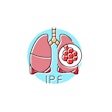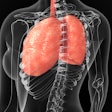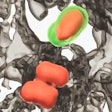
A new concept for the delivery of inhalable medicines for respiratory conditions may revolutionize therapy. The model, known as Total Inhaled Deposition in an Actuated Lung (TIDAL), is a novel approach to understanding and addressing the complexities of aerosol deposition in the lungs. Pinpoint delivery is crucial for effective treatment of respiratory conditions.
Details of the innovative concept from University of Delaware engineers in Newark are outlined in the study, “Experimental Full-Volume Airway Approximation for Assessing Breath-Dependent Regional Aerosol Deposition,” and published in the journal, Device.
The TIDAL system was tested using a vibrating mesh nebulizer to deliver aerosols, with results showing the system effectively predicts central-to-peripheral aerosol deposition. The study demonstrated that the TIDAL model could replicate patient-specific breathing conditions and provide valuable data on how different factors influence aerosol delivery.
Key features of the TIDAL system include:
- A full-volume, 3D-printed lung model capable of simulating cyclical breathing.
- A modular design that combines patient-specific upper airways with approximated deep airways, allowing for customizable and scalable studies.
- Tunable breathing, which leverages an interactive, graphical user interface to enable real-time adjustments to breathing patterns and enhance the accuracy of aerosol deposition studies.
- Quantified, regional mapping deposition to clinical standards, which provides detailed insights into how aerosols distribute within the lungs.
According to researchers, the TIDAL system’s ability to model patient-specific airways and breathing patterns represents a significant advancement in the field of inhalable medicine. By providing a more accurate and adaptable platform for studying aerosol dynamics, the TIDAL system has the potential to improve the efficacy of inhalable treatments and lead to better patient outcomes.






















